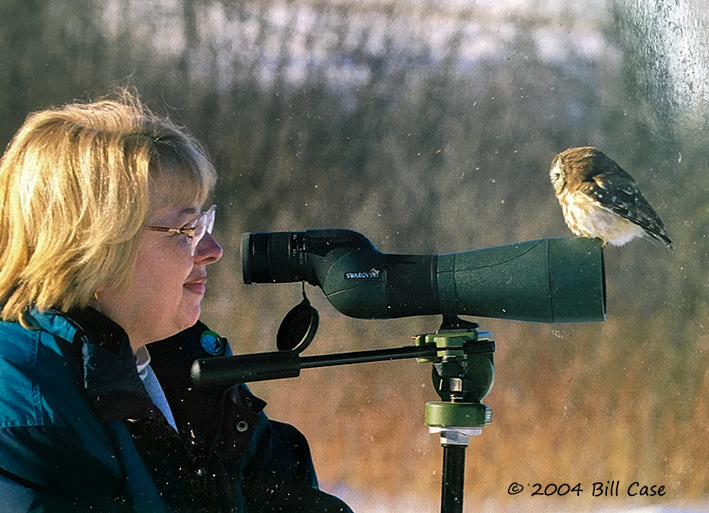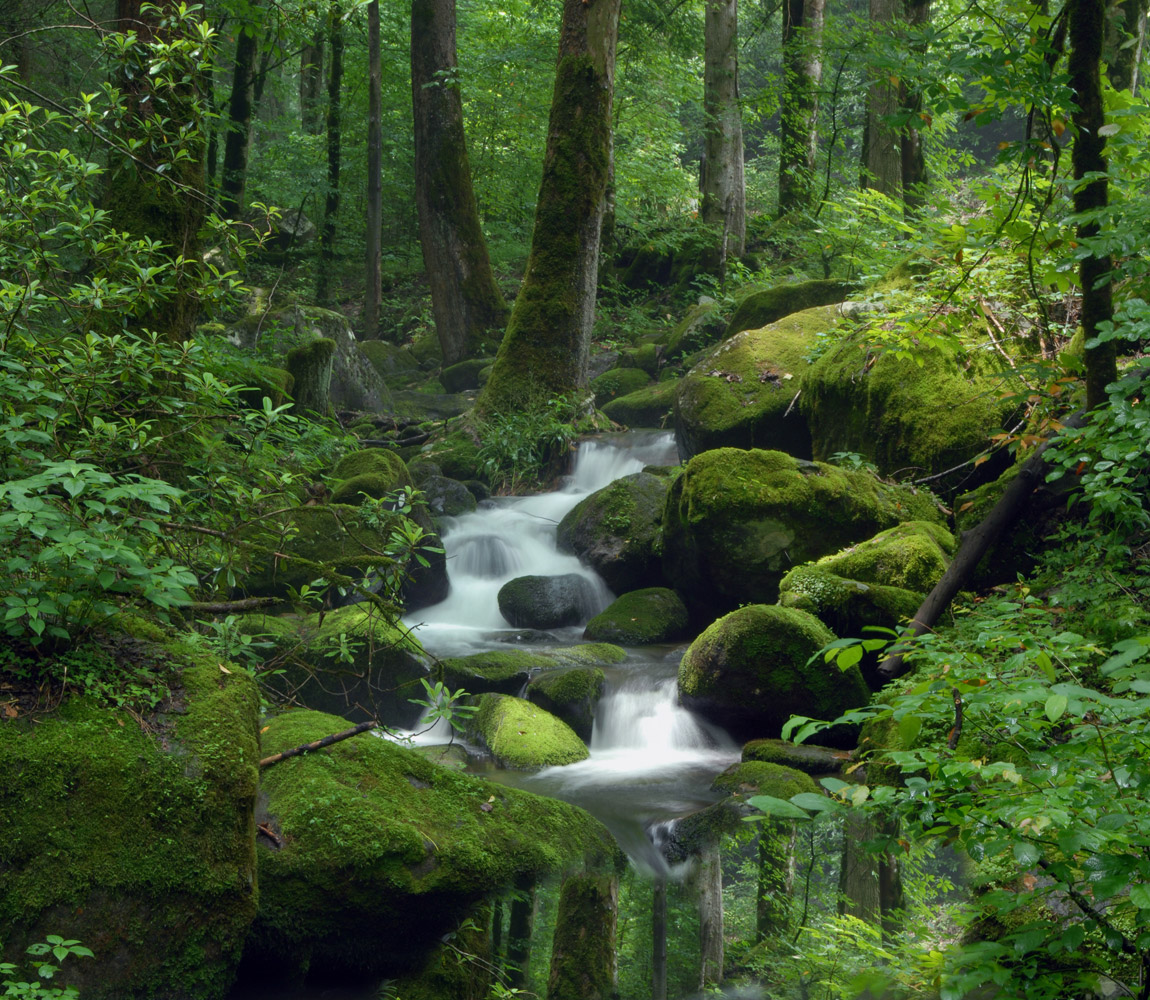Club History

Peg Rudis, near Clayton NY 2.16.2004 ©Bill Case
Click here for a gallery of club historical photos.
See below for:
- 125 Years of Birding Milestones in Dutchess County: a county birding chronology
- The First Twenty-five Years: A Brief History of the Ralph T. Waterman Bird Club, by Helen Manson Andrews
- A remembrance of Ralph T. Waterman, by his son Otis Waterman
125 Years Of Birding Milestones In Dutchess County
| 1881 | Winfrid A. Stearns publishes his List of Birds in Fishkill on-Hudson, N.Y., the first formal list of birds in Dutchess County. |
| 1896 | 14-year-old Franklin D. Roosevelt keeps a birding diary listing all birds seen or heard each day at the Hyde Park estate. Some birds were collected and mounted and remain on display at his home. |
| 1901 | Maunsell S. Crosby, at age 14, conducts the first Christmas Bird Count in Dutchess County at Rhinebeck. This was the second year of the Audubon sponsored counts. |
| 1910 | The Birds of New York by Elon Eaton is published, containing a list of birds in each county. The Dutchess County list was compiled mostly from the records of Mary Hyatt and Lispenard Horton. |
| 1914 | The Rhinebeck Bird Club is formed. It becomes very active, publishes lists and reports, but withers by the mid 1920's. |
| 1919 | Allen Frost encourages Maunsell Crosby to conduct a May census. The May census has been an annual event ever since. |
| 1921 | Maunsell Crosby publishes his Preliminary List of Birds of Dutchess County. |
| 1931 | Maunsell Crosby dies suddenly from complications of appendicitis. His life work of collecting data on Dutchess County birds remains unpublished. |
| 1933 | Ludlow Griscom compiles Crosby's data into the book Birds of Dutchess County. |
| 1948 | Ralph T. Waterman begins teaching Bird Identification classes in the Arlington Adult Education program with 10 students in attendance (some are still with our club today). |
| 1949 | The first Dutchess County Bird Club is started by Ralph T. Waterman and his students. |
| 1958 (September) | A new Dutchess County Bird Club is established with 71 members. News Notes, a semi-annual newsletter, begins publication with the Winter 1958/59 issue. |
| 1959 (November) | The club is renamed after its founder, Ralph T. Waterman, following his and his wife's tragic death in an automobile accident. |
| 1960 | The newsletter that became Wings over Dutchess begins publication. The club hosts the first of many Audubon Screen Tours. Roger Tory Peterson, among other well-known birders, visits Dutchess County as a lecturer for one of the films during this first tour. |
| 1961 | The first local telephone relay for reporting rare birds is established. |
| 1962 | Florence Germond establishes the bluebird nesting box trail, which has grown and been monitored yearly ever since. Otis and Ginny Waterman welcome a son into the world, and name him Roger Tory. To their delight, his namesake accepts their invitation and comes to the christening. |
| 1963 - 1965 | Birds of Dutchess County, 1933-1964 is published in installments. |
| 1975 | The club acquires tax exempt status. |
| 1977 | Where to Bird in Dutchess County is published. It is revised and republished in 1979. |
| 1980 | Birds of Dutchess County, 1965-1979 is published. The New York State Breeding Bird Atlas project is begun. |
| 1985 | Checklist of the Birds of Dutchess County is published, with abundance bar graphs. |
| 1990 | Where to Bird in Dutchess County, 2nd edition, is published. |
| 1994 | 75th annual May bird census is conducted in Dutchess County. |
| 1998 | The Birds of Dutchess County reference card is published. 40th Christmas Bird Count is coordinated by the club. |
| 2000 | Atlas 2000, the New York Breeding Bird Atlas project, is begun. |
| 2001 | The Ralph T. Waterman Bird Club website is launched. |
| 2002 | RTWBC participates for the first time in the Great River Sweep to help clean up the Hudson River's banks. |
| 2006 | The Birds of Dutchess County is published. |
The First Twenty-Five Years: A Brief History of The Ralph T. Waterman Bird Club
by Helen Manson Andrews
Originally published in Wings over Dutchess, April 1983
In 1949 the first Dutchess County Bird Club was formed. At that time Ralph Waterman was conducting classes in Bird Identification at the Arlington High School Adult Education Program (in the building that is now Arlington Middle School) and members of the class were part of the club. Raymond Guernsey was president, Marion VanWagner Recording Secretary, and Eleanor Pink Record Chairman. Mr. Guernsey financed the first efforts and a metal box was provided for the record cards. The group met a few times each year for the next few years and some of us continued to go to the identification classes and participate in the annual spring bird census and the Christmas bird count. However, the club was loosely formed and even though we continued to send in records and have field trips, the club was in need of reorganization.
In 1958, all the available people from the classes were asked to meet at Baird State Park for a mid-summer get-together. There was quite a crowd and from that a group was formed and plans went ahead. In September a meeting was held at the Arlington High School and the present Dutchess County Bird Club was born. Officers were elected and Ray Connelly was the first president. We were off and running. Then tragedy struck. Our founder and good friend and his wife were killed in an accident in Myrtle Beach, S.C. They were on vacation and had planned to return to bird with us and guide us in this new venture. The club was renamed the Ralph T. Waterman Bird Club. We started with 71 members and the membership grew the first year. Our first bulletin was called Bird Notes and was published through the courtesy of Victor Grover. Four copies a year were issued for the first two years.
Our first bulletin, as we see it today, was printed November 1960. Mary Key, Helen Manson and Florence Germond were the bulletin committee. At first it was called The Ralph T. Waterman Bird Club News Bulletin. We put out an appeal for a name and had many suggestions, including The Chicken Hawk (Otis), The Juncoes Slate (Ray), Bird Words, Creeper’s Review and Wings over Dutchess (Sally Draney), which was unanimously chosen by the members. The dues were $3 single, $5 family.
Otis Waterman was elected president in 1960 and we had the first of many Audubon Screen Tours. The first year we had as our speaker Roger Tory Peterson. Half of the proceeds from the lectures went to the Arlington High School Scholarship Fund. In return we used the school auditorium free of charge. A Western Meadowlark was found mated to an Eastern Meadowlark female on Layton Rd. in Bangall, and caused a few traffic jams. The birds, with their offspring, were collected and taken to an aviary on Long Island for study by the Museum of Natural History. In 1961 the first telephone relay was started and called the Wild Goose Chase. It did help many of us to see rare and interesting birds.
Ralph T. Waterman Remembered
by his son Otis T. Waterman
Originally published in Wings over Dutchess, April 1983
My father was born in 1901 in Kinderhook, N.Y. His childhood was spent in Poughkeepsie on Forbus Street and Grand Avenue where he had a large garden and met my mother, Katherine (always called Pete). He managed to finish only the eighth grade before running away to join the army during WWI at age 16. My grandmother had him returned home, being underage, but as the war ended he did enlist, serving as an aide to General Pershing on a trip to Panama after the war. Married in 1921, he took up chicken farming with Pete on the Sharon Turnpike near Millbrook, which lasted until 1933 when they (we) moved to Poughkeepsie and he started the Waterman and Heaton Insurance Agency which was succeeded by the Hill Agency.
Ralph, an outdoorsman and sportsman since childhood, spent his summers fishing on Upton Lake. He was an avid trout fisherman (particularly fly fishing) spending many hours each season on the Sprout Creek in LaGrange or the Wappingers Creek above Pleasant Valley. His interest in birds did not really commence until 1943 when he took over as Scoutmaster of Troop 2 and then 16 in Poughkeepsie. He was guiding a number of us Boy Scouts, including myself, to attain the Eagle Badge. This required a merit badge in Ornithology and identifying 40 birds in the field. He became extremely interested and took to the field almost every chance he could. His favorite birding spots then were a marsh behind our house, Ireland’s farm and Brickyard Swamp, all in the Town of Poughkeepsie. The first is still there for the most part, the second is a housing development, and the third is the 44 Plaza Shopping Center.
He subsequently became an intense bird student, being helped by Allen Frost and Ray Guernsey (Meg Guernsey’s great uncle), both experienced birders in the county since the nineteen-twenties. They in turn had birded with Maunsell Crosby, probably the father of Dutchess County birding, who lived at his estate, “Grasmere,” southwest of Rhinebeck. Ralph was also helped by several ornithologists at Vassar College, including Ralph Palmer in particular.
Ralph first went on Dutchess County’s historic (started in 1919) May Census in 1945 with George Gray, Allen Frost, Ray Guernsey and Frank Gardner. These were probably the only birders in the county at the time. I joined them in 1946 mostly as an observer of the birders.
My father’s real claim to fame was the many people he taught and interested in birding in a relatively short period of time (1943-1958). He started his adult education classes at Arlington High School in 1948 at the urging of Eleanor Pink. Eleanor recalls that it was difficult to get the required ten to start the first class but its members included Marion Van Wagner, Dan Muncell, Helen Manson, Bill and Louise Chrystal, Marge King, Natale Mestechen and several more. Subsequent classes produced birders which formed the first Dutchess County Bird Club in April 1949 with Ray Guernsey as president. This club did not last for some reason, but by 1958 with more students available, the second Dutchess County Bird Club (changed to The Ralph T. Waterman Bird Club after my parents’ death in an auto accident in November 1958 in Myrtle Beach, SC) was formed.
In my opinion the success of the adult education classes (Ralph also gave many talks to local groups here and in Myrtle Beach where they went in winters 1952-1958) was Ralph’s charismatic nature and his intense interest in everything he did from fishing to woodworking to birding to ceramics to golf. This leadership ability manifested itself throughout his life as he was president or head of the Masons, the Kiwanis, the Dutchess Golf and Country Club, the Chamber of Commerce, First NYS Forest Practice Board, etc., etc.




